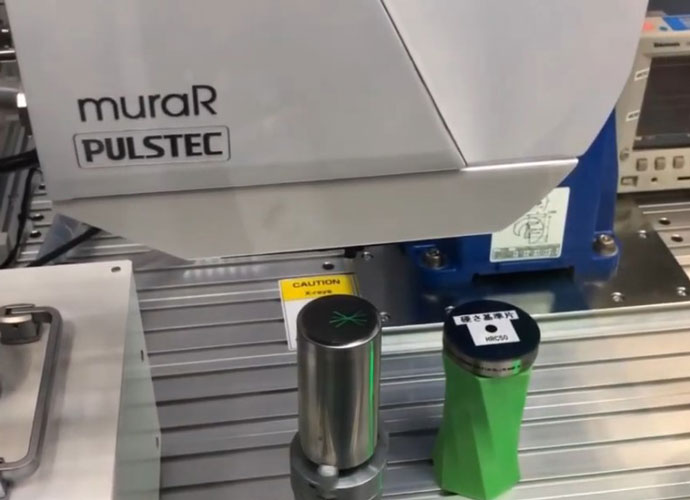
Pulstec’s muraR is an innovative, non-destructive, portable hardness tester designed to quickly, conveniently, and accurately measure the hardness variation of steel surfaces.
What sets it apart from other hardness testers for steel is its unique, non-destructive operation—a first within the industry.
Traditional methods, such as Vickers and Rockwell, have some drawbacks. The primary drawbacks are these methods are destructive (rendering the tested part useless), time-consuming, and require pre-processing. The muraR circumvents these issues, providing an effective tool to gauge hardness variations swiftly and safely.
Instead of measuring the depth or size of the dent, the muraR will analyze the materials’ properties by detecting the broadness of X-ray diffraction peaks (called Full Width Half Maximum or FWHM). FWHM is proportional to hardness and plasticity for four reasons: 1) grain size, 2) dislocation density, 3) distortion, and 4) martensitic structure. By scanning the sample’s surface using X-ray, you can find hardness variation caused by processing failures, such as machining burn, grinding burn, or improper heat treatment.
In the following sections, we’ll provide a step-by-step breakdown of how our device works and how to use it most effectively.
1. Set the Sample

Before measuring your sample, you must confirm there are no surface paintings or coatings on your steel specimen. With the muraR Surface Hardness Variation Scanner, cutting, mounting, and polishing samples is not mandatory.
It’s also important to note that the muraR is designed solely for evaluating steel—ensure you’re using a steel sample before proceeding.
Once it is ready, your sample must be securely set to the fixture. The muraR scanner is set to a fixed stage or a robot, keeping a sample distance of 45 millimeters. It then scans sample’s surface, which is held in place by a pulley, precision roller, or liner guide based on what’s being evaluated.
A key point to note when using the muraR scanner is that it operates with a standard X-ray spot size of 3 millimeters. The scanning speed combined with this X-ray spot size is critical in balancing the resolution of each measurement with the time taken to complete it.
2. Scan the Sample

Examining the hardness variation of steel surfaces has never been easier.
With the muraR non-contact surface hardness scanner, you can quickly scan a 2” x 2” area within 120 seconds. However, it’s important to remember that scan speed will differ based on your chosen X-ray spot size and scanning method.
Additionally, our X-ray hardness tester can easily be incorporated into a robotic automation system, which means you can now choose between a manual or automatic scan.
3. Analyze the Color Map

The scanner calibrates the full width at half maximum (FWHM) obtained from X-ray diffraction and hardness reference specimens. Then, it takes the FWHM of the X-ray diffraction profile and converts it into voltage. The voltage values are then mapped as hardness on the sample’s surface, providing a dynamic and colorful representation of the hardness across your material’s surface.
The translation between voltage and hardness has an inverse relationship but is still intuitive and straightforward. As the voltage level decreases, the hardness of the specimen rises. You can expect a voltage of approximately 7.5V when measuring an HRC40 specimen, which is roughly 1.5V for an HRC70 measurement.
Dark blue areas represent soft regions within the material, while increasingly brighter hues reflect increasing hardness. Deep red signifies the hardest portions of your sample.
Using the color map makes identifying areas of concern or interest quick and effortless, freeing up time for you to direct your expertise where it matters most.
Request a Demo Today
Pulstec has been manufacturing cutting-edge electronic equipment since our founding in 1969. If you’d like to learn more about the muraR Surface Hardness Variation Scanner, contact us today to request a demonstration or free sample measurement.

